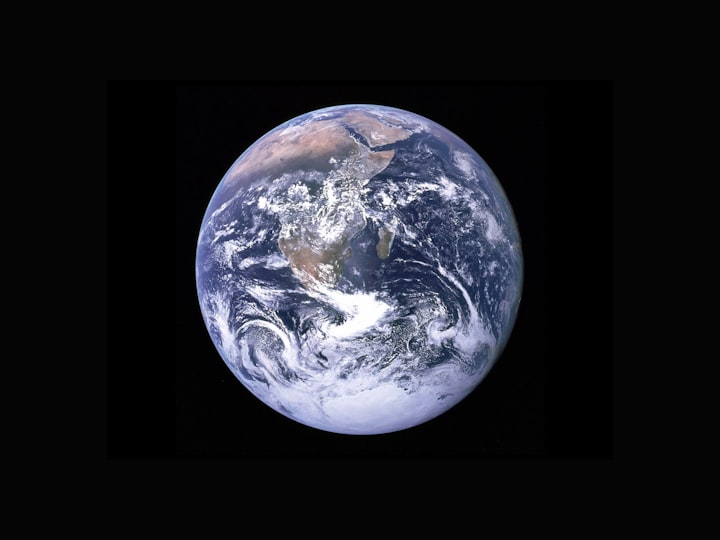The history of the Earth can be divided into different periods and eras based on significant geological and biological events. These divisions are known as the geologic time scale, and they help scientists to better understand the history and evolution of the planet. The geologic time scale is typically divided into four main eons, which are further subdivided into different eras, periods, and epochs.
Hadean Eon (4.6 to 4 billion years ago)
The Hadean Eon represents the earliest period in the Earth's history, immediately following its formation. During this time, the planet was largely molten and experienced intense volcanic activity, as well as bombardment by asteroids and comets. No rocks from this period remain on Earth today, but evidence of the Hadean Eon can be found in the oldest minerals and rocks that have been discovered.
Archean Eon (4 to 2.5 billion years ago)
The Archean Eon was characterized by the emergence of the first life forms, including bacteria and archaea. These early organisms thrived in the Earth's oceans and are believed to have played a crucial role in transforming the planet's atmosphere through the process of photosynthesis.
Proterozoic Eon (2.5 billion to 542 million years ago)
The Proterozoic Eon saw the emergence of complex multicellular organisms, including the first animals. This period also saw the formation of the supercontinent Rodinia, which began to break apart around 750 million years ago.
Phanerozoic Eon (542 million years ago to present)
The Phanerozoic Eon is divided into three eras: the Paleozoic, Mesozoic, and Cenozoic. During the Paleozoic Era, which lasted from 542 to 251 million years ago, the first fish, amphibians, reptiles, and insects evolved. This era also saw the formation and breakup of the supercontinent Pangaea, as well as several mass extinctions, including the one that wiped out the dinosaurs around 66 million years ago.
The Mesozoic Era, which lasted from 251 to 65 million years ago, is sometimes called the "Age of Dinosaurs." This era saw the evolution of many new species, including birds and mammals, as well as the breakup of Pangaea into the continents we know today.
The Cenozoic Era began around 65 million years ago and is marked by the continued evolution of mammals, as well as the emergence of humans. This era is divided into two periods: the Paleogene and Neogene, which are further subdivided into epochs.
In addition to these main divisions, the geologic time scale also includes several smaller divisions, such as stages and ages, which are based on specific events and developments in the Earth's history. Together, these divisions provide a framework for scientists to study and understand the complex history of our planet.
{Age Of Earth} :-
The age of the Earth is estimated to be around 4.54 billion years. This estimation is based on a variety of scientific evidence, including radiometric dating of rocks and minerals, and analysis of the composition and density of the Earth and its atmosphere.
One of the key pieces of evidence used to determine the age of the Earth is the decay of radioactive isotopes. Certain radioactive isotopes, such as uranium and thorium, decay at a predictable rate over time, and the products of this decay can be used to determine how long ago the original isotopes were formed. By analyzing the decay of various isotopes found in rocks and minerals, scientists have been able to determine that the Earth is approximately 4.54 billion years old.
In addition to radiometric dating, other methods have also been used to estimate the age of the Earth. For example, the ages of the oldest known rocks on the Earth's surface have been determined to be around 4 billion years old, and the ages of the oldest meteorites, which are thought to be remnants of the early solar system, have been estimated to be around 4.56 billion years old.
It is important to note that the age of the Earth is constantly being refined as new evidence is discovered and new techniques are developed for analyzing that evidence. However, the current estimate of around 4.54 billion years is widely accepted within the scientific community.
{2} Fossils :-
Fossils are the preserved remains, impressions, or traces of ancient organisms that lived in the past. Fossils can include the hard parts of animals, such as bones, teeth, and shells, as well as the impressions left behind by soft tissues, such as footprints, tracks, and burrows.
Fossils are important because they provide evidence of the diversity of life that has existed on Earth over the past 3.5 billion years. By studying fossils, scientists can learn about the morphology, behavior, and evolution of extinct organisms, as well as the environments in which they lived.
Fossils form through a variety of processes, depending on the type of organism and the conditions in which it lived and died. In some cases, the hard parts of an organism may become buried in sediment and slowly replaced by minerals, creating a mineralized copy of the original organism. In other cases, the organism may leave behind an impression in the sediment that hardens over time, preserving the shape of the organism.
Fossils can be found in a variety of rock types, including sedimentary rocks, such as sandstone and shale, which are formed from the accumulation of sediment. Fossils can also be found in volcanic rocks, such as ash and lava, which can preserve the remains of organisms that were buried quickly by volcanic activity.
The study of fossils is called paleontology, and it is an important field of science for understanding the history of life on Earth. Through the study of fossils, scientists can reconstruct the evolutionary history of different groups of organisms, and can gain insights into the processes that have shaped life on our planet.






Comments
There are no comments for this story
Be the first to respond and start the conversation.